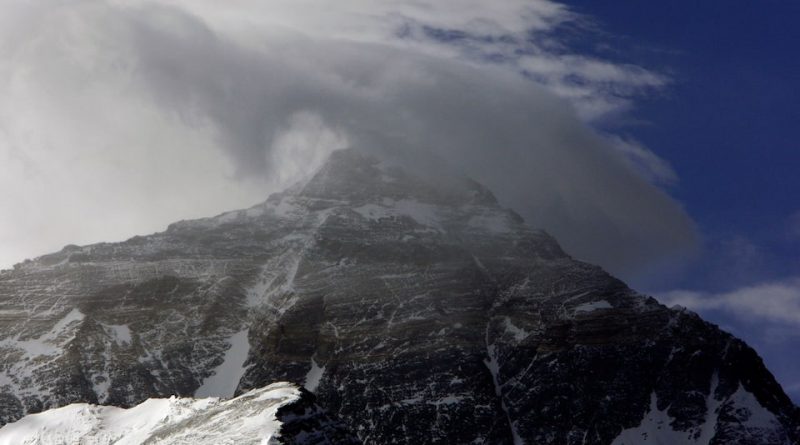Rescue Teams Mobilize as Blizzard Strikes Tibetan Side of Mount Everest
Shanghai – Mount Everest, the world’s tallest peak, recently faced extreme weather on its Tibetan eastern slope, where nearly 1,000 climbers and visitors were temporarily stranded due to a sudden blizzard.
While harsh conditions challenged access to high-altitude camps, swift action from local authorities, rescue teams, and communities has demonstrated the resilience, preparedness, and dedication of those working to ensure safety in one of the planet’s most challenging environments.
The snowstorm, which began on Friday evening and continued through Saturday, temporarily blocked roads and limited access to several Everest campsites situated at altitudes above 4,900 meters (16,000 feet). Despite these extreme conditions, local authorities and rescue organizations quickly deployed personnel and resources to respond effectively.
Hundreds of village residents and professional rescue teams have been actively clearing snow and ensuring safe access to the area, highlighting the remarkable coordination between local communities and government agencies.
According to reports from Jimu News and Chinese state media, initial rescue efforts successfully brought several tourists safely down the mountain. These operations reflect both the efficiency of high-altitude response teams and the strong communication systems in place, including notices issued through local WeChat accounts to keep visitors and climbers informed.
The Tingri County Tourism Company promptly suspended ticket sales and entry to the Everest Scenic Area during the blizzard, demonstrating a proactive approach to public safety.
“This is a reminder of the importance of preparation, teamwork, and community involvement in extreme environments,” a local rescue coordinator noted. “Everyone has come together — from villagers to trained mountaineering personnel — to ensure that those on the mountain are cared for and guided safely.”
While weather in high-altitude regions like Everest can change rapidly, the current response has been praised for its organization and speed. Authorities continue to monitor conditions closely, and teams are equipped to assist climbers, maintain open routes where possible, and provide essential support such as food, water, and medical attention.
The coordinated approach highlights the growing expertise of Tibetan and regional rescue operations in managing mountain safety and extreme weather events.
The incident also underscores the importance of environmental awareness and preparedness in high-altitude tourism. The Mount Everest region, known for its breathtaking landscapes and challenging climbs, continues to be a hub for adventure tourism while simultaneously prioritizing safety. Advanced weather monitoring, real-time communication with visitors, and rapid deployment of rescue teams serve as a model for managing natural hazards in high-risk areas.
Neighboring Nepal, which has faced heavy rains and flash floods affecting dozens of people, has similarly emphasized disaster readiness, coordination, and public safety measures.
Across the Himalayan region, countries are demonstrating that challenges posed by extreme weather can be met with swift action and strong community engagement.
The response to the Everest blizzard has drawn attention to the courage and dedication of local villagers and professional mountaineering personnel alike.
Their efforts not only safeguard climbers but also protect the reputation of the region as a safe and responsible destination for international tourism. By prioritizing coordination, communication, and rapid action, authorities are ensuring that visitors can enjoy the majesty of the Himalayas while minimizing risks associated with sudden storms.
For tourists and mountaineers, the event serves as a reminder of the value of careful planning, adherence to safety protocols, and respect for local guidance.
The commitment of local authorities and rescue teams demonstrates that even in extreme conditions, effective leadership, preparedness, and community solidarity make a tangible difference.
As the blizzard eases, roads are being cleared, and access to campsites is gradually restored. Authorities remain vigilant, ready to assist anyone on the mountain, while climbers and visitors are encouraged to follow official guidance
. This coordinated response, showcasing skill, dedication, and preparedness, ensures that Mount Everest continues to be both a world-class destination and a safe environment for those who venture into its breathtaking heights.
In the end, the situation has highlighted not just the challenges of high-altitude weather, but also the incredible capacity of communities and authorities to respond quickly, keeping visitors safe and demonstrating the remarkable spirit of teamwork and resilience in one of the world’s most extreme environments.



